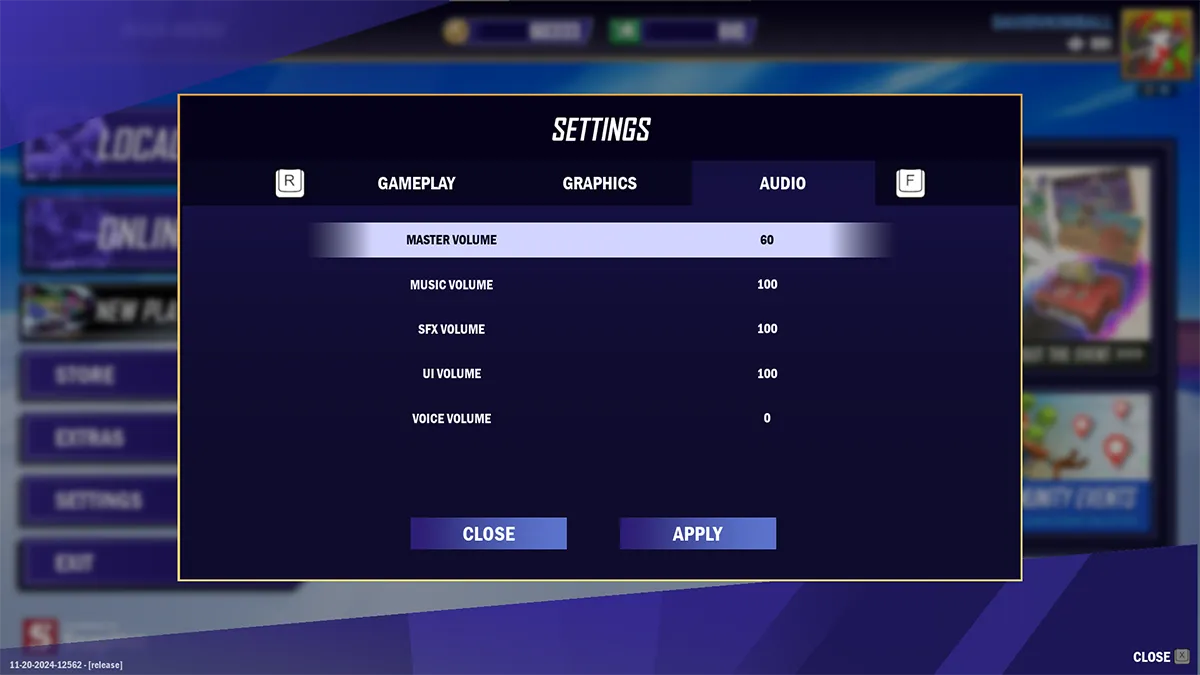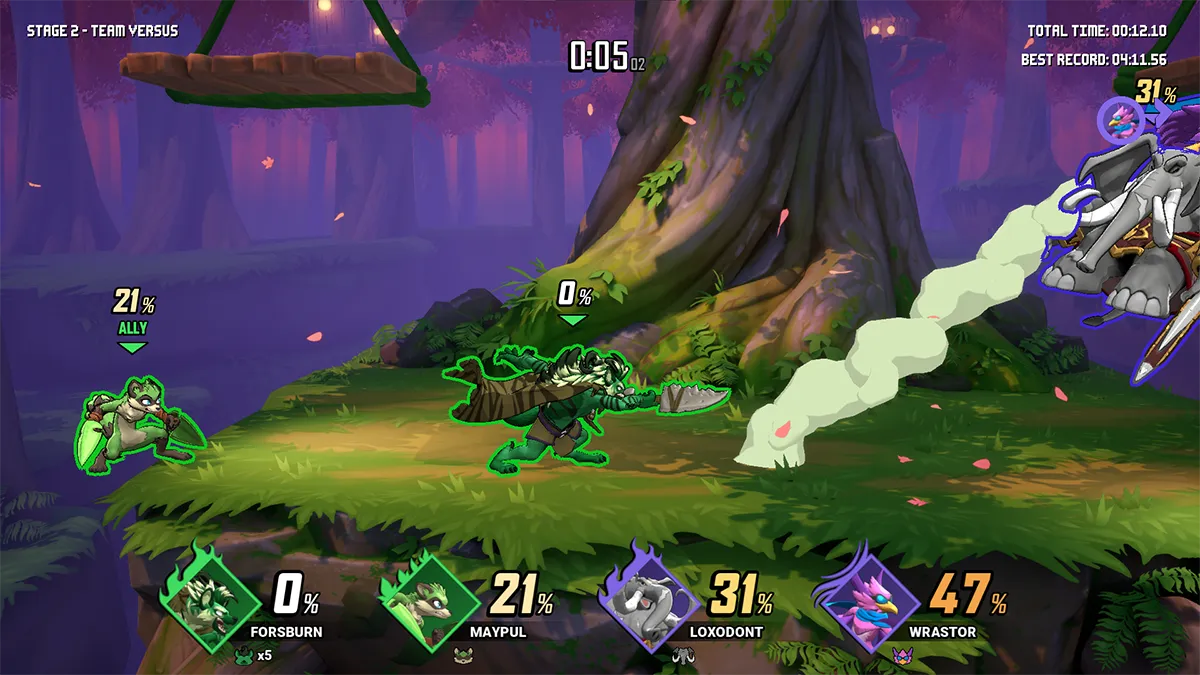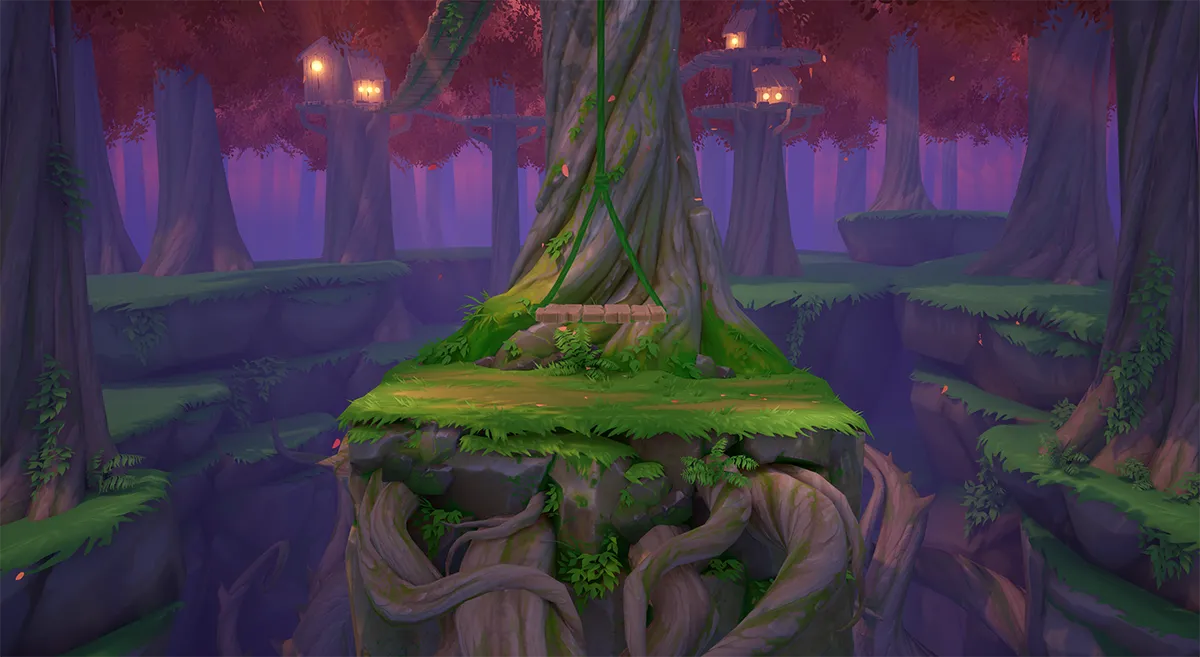My Thoughts on Rivals of Aether II
Since it’s release about a month ago, I’ve been really enjoying my time with Rivals of Aether II. The shiny new platform fighter makes its way onto Steam after its predecessor, Rivals of Aether, had been getting updates for nearly a decade.
I wanted to share my thoughts on Rivals 2 as it’s an interesting cross section of what I really love and appreciate about platform fighters, and has surprised me in several ways, with just a few complaints.

Game Feel
In short: it feels great. Thanks to more generous input windows compared to Super Smash Bros. Melee (ala Project M), even technical movement can be executed with relative ease. This is great for picking up and playing from Melee or Project M, or really any other platform fighting game.
My first and main complaint about the game is its insistence on a mandatory input buffer system. This means, within a 6-frame window, your timing can be “off” and the input will still execute during the first available frame. For example, if you press A too early from a tech roll, you’ll still jab. But this “benefit” doesn’t always help. As an example, I’ll often be mashing an input with an intended purpose, and somehow get interrupted by an opponent, and find myself doing an aerial I didn’t intend to do, sometimes leading to my death. Anyone coming from Melee and PM, which has absolutely no input buffer whatsoever, tend to prioritize responsiveness and would likely appreciate a toggle to turn off the buffer system.
That complaint aside, the controls feel snappy and connecting custom combos feels extremely satisfying. Dash dancing feels fair across the roster, little landing lag for most aerials keeps games moving, and it feels like every character has plenty of movement options. Even the early preview I tried at Pax West 2023 felt super polished, and I’m happy it’s managed to remain feeling great even today.

Gameplay
I appreciated the first Rivals of Aether game (I even got to try it at a 2014 Seattle local in its extremely early phases) but could never quite get behind the core mechanic differences. Reliance on walljumps as a primary movement option off-stage, as well as no ledges, shields, or grabs was too much of a departure from the rock, paper, & scissors dynamic I was used to from the Super Smash Bros. titles - attacks, shields, and grabs ledgehoging, etc. It afforded more aggression and high speed gameplay in some ways I admired as a spectator, but I couldn’t ever quite get used to actually playing with it.
Rivals 2’s return to form in many ways is welcomed from me. Since there’s no helpless state after an air dodge and every character can walljump, it feels like a great compromise between Rivals 1 and Melee, biasing more towards the Melee side, and all mechanics and options considered, it ends up playing a lot like Project M (which is a good thing).
That being said, new mechanics exclusive to this game like ledge specials, get up specials, and pummel specials with parries all feel like natural extensions to existing mechanics, and I love that shield + B is parry like in Super Smash Bros. Ultimate’s HewDrawRemix mod. Giving us more options while not overwhelming us with new mechanics is a challenge with platform fighters, but I believe Rivals 2 strikes that balance very well.

Characters + Kits
I’m not sure if it was the simpler pixel art style or just my initial unfamiliarity with them, but I had a tough time connecting with the Rivals characters and the Rivals world in Rivals 1. This time around though (ironically it could be in part because I recognize them from other Aether games), I have really begun enjoying the characters - not just aesthetically or design-wise, but also in terms of their unique moveset and kit.
Dan Fornace and team’s really smart character kit design was probably always present in these characters, but in Rivals 2 I’ve actually really started appreciating it. I think because it took concepts I had previously discarded as gimmicks before, and managed to package them into a more comfortable and accessible way for someone like me as a Melee-first/PM-biased player. I felt more free to experiment and try in a more familiar-feeling environment so it just clicked.

This helps underscore how each character feels entirely unique and well-thought out, and by contrast, how padded some other fighting games’ rosters are with clones. I’m not necessarily saying more options is bad, but sometimes less is more.
I started off playing Ranno because I play Sheik in Melee, and I enjoy him a decent amount. But more recently I’ve really been playing Forsburn, so I think I’d consider myself a Forsburn main now. I also enjoy switching to Zetterburn and Kragg. I can play Clairen, Fleet, and Loxodont as well, but I’m pretty mid with them. However I’m abysmal with Wrastor, Orcane, and Maypul. Maybe that will change with time.

Music + Sound
The music remixes from the first game are absolutely stellar. Rivals 1’s music was already great to begin with, and Rivals 2’s new tracks are the perfect upgrade. No complaints there.
Sound design is also excellent when it comes to hits, punches, slashes, etc. Some of my favorite SFX in any fighting game. I’m very grateful, however, for a separate voice sound effect slider in settings, because some of the vocal performances are a little annoying to me. I’ve experimenting with setting the voices to 0 and haven’t felt the need to turn it back on since. This critique extends a bit to the overall presentation, particularly the opening cinematic - it feels a tad cheesy, but I can’t put my finger on exactly why. Maybe I just found the voice acting too heavy-handed in general.

Game Modes
I spent most of my time playing online in casual matches. 1v1 is where this game really shines obviously, but I’ve had a lot of fun in 2v2s and even some free-for-all matches. Incentivizing otherwise unpopular game modes with an increase in EXP is a brilliant way to make sure each game mode has players. Obviously the game is still new and in the height of its launch window surge, but I have never had to quit because it couldn’t find me a match.
Ranked mode is great too, but I’m not sure how I feel about whether or not you should receive a global rank, or character-specific rank. Currently it’s global, meaning you are ranked based on your overall performance (wins vs. losses and against whom) irrespective of the character you’re playing. I’m also assuming this will get tweaked, updated, and improved in the future, so I’m not too worried about it.
It’s easy enough to queue with your friends and get matches going. No complaints there.
For single player experiences, it feels a little sparse. I’ve completed each character’s arcade-style single player mode on each difficulty, and I appreciate that “game overs” only translate to more time added to the clock. That makes it more engaging and I’m much more likely to try higher difficulty settings as a result. I do wish the target test stages were available separately (I’m sure they will be soon in an update).

Training mode is satisfactory for someone at my level - but there are almost endless possibilities there to give players tools to improve. I look forward to more single player options (even character-based tutorials like in the first game) in the future.
Online Play
Rivals 2 uses rollback netcode and it feels great to play online. I’ve tried to limit it to folks just near my location, but even in free-for-all matches, games feel great. Once and a while I notice some warping from a player with a poor connection, but it’s nothing too different from what you might experience on Slippi.

Art Style
Game looks great. The cell-shaded art style has proven to age well in the past with games like The Legend of Zelda: The Wind Waker, or even in “modernizing” visual overhauls like Melee’s Animelee modpack. I’ve noticed some really noticeable jagged, blurry lines on the beta backer retro skins, but otherwise the visuals pop and look really clean. Background environments also have enough detail to not feel barren but aren’t overwhelming visually either.

Not only does it look great, but it’s a great art style for visually-impaired or colorblind individuals. There’s enough visual contrast on the models, character effects, and background to make things easy to see.
The game’s UI and HUD is a little basic, and the menus look a little rough and are even buggy in some places, but overall serviceable. In-game HUD is clear enough and the most important to get right, while menu functionality and visuals can be improved in the future.

Stages
A platform fighting game should have good platforming stages. And Rivals 2 definitely delivers. As discussed above, visually they look great and there isn’t any ambiguity about what’s walkable and what isn’t. There are a couple of stages I don’t like personally, but overall they’re all solid choices. Nice neutral stages that don’t get in the way of gameplay, with enough variety and unique platform layouts to keep things interesting. A couple clearly inspired by Project M stages which I particularly appreciate, too.

Cosmetics, Skins, and Store
By far, the most surprising aspect of this game I love are the cosmetics, skins, and the store. I have been thoroughly impressed not only with the variety of unlockables available at launch, but the quality and frequency of new packs of skins, themed designs, and other items you can buy in the store so soon after launch.
From what I know from Animelee, Smash players love custom skins. And apparently I’m no different. There are unique palette swap options, but also custom skins with unique models, graphical effects, and even sound effects. I easily spent the $20 to get the starter pack, which gives you a bunch of coins, Aether bucks, and a 20% increase of coins. Coins and Aether bucks are the in-game currency which you can achieve by playing the game normally, participating in in-game events, or buy buying with actual money.

I never thought I’d say this, but I absolutely love this model. There’s no “pay-to-win” angle at all, no exclusive gated content paywalled (at least seemingly so far), and plenty of options for players. If you want to grind the gameplay to achieve the store items, you can do that. Or you can pay cash and support the game / developers. The FOMO (fear of missing out) factor is sometimes enough to pressure me into wanting to pay to get a skin early, but I can usually resist with the knowledge that I can get it myself given enough time by just playing the game.

Future Plans
I know they plan to do a full adventure mode-style single player experience, which I’m excited about, and I’m sure there will be new characters and content to look forward to in the future. I don’t have any expectations or strong feelings about which characters get added to the roster, just am excited for anything they could add.
Regarding player-created or custom content, I’m not entirely sure what they’ll be doing with Steam Workshop this time around. The barrier to entry is much higher when it comes to asking people to create custom meshes / modeling, rigging, UV-wrapping, weighting, etc. Nothing will come close to Smack Studio’s accessibility when it comes to custom content in my opinion. However, I’d love to be surprised.

Conclusion
As you may have surmised from this review, I’m certainly no top-level platform fighting game player, nor am I merely a casual. I’m somewhere in the middle (I believe it’s called pro-amateur?). I appreciate a skills-based responsive game that’s deep but also accessible and easy to pick up, and Rivals 2 certainly fits the bill. I’ve had fun just trying each character and, while I can’t for the life of me get comfortable with all of them, I still find myself coming back to a handful I enjoy playing.
It’s honestly impressive how quickly Aether Studios has turned this game around, and the polish and quality of the product launch has been impressive to witness. Many forget, holding a Triple A studio’s standards against a small indie team is not remotely realistic - and even so, this game has a level of polish and care given to it that has exceeded my expectations.
Sound like something you’d be into? Get this game! You can join my Discord server and play some friendlies with us if you’d like.


